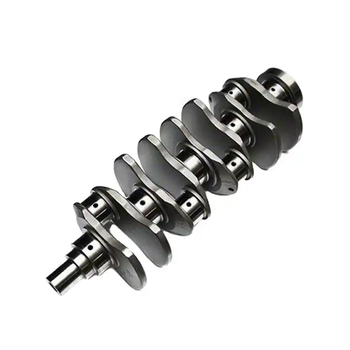Introduction
To be honest, the crankshaft is a critical component of any engine. It's responsible for converting linear motion into rotational motion, making your car move. Unfortunately, like any other mechanical part, it's prone to wear and tear, which could lead to engine failure if not addressed promptly. This guide aims to provide you with essential tips and techniques for crankshaft repair and maintenance.
Understanding Crankshaft Wear and Tear
Before diving into crankshaft repair and maintenance, it's crucial to understand the signs of wear and tear. Some common symptoms include engine knocking, misfiring, reduced engine performance, and oil leaks. If you notice any of these symptoms, it's essential to have your crankshaft inspected by a professional as soon as possible.
Inspecting the Crankshaft
When it comes to inspecting the crankshaft, there are several techniques that professionals use, including magnetic particle inspection and ultrasonic testing. These methods can detect cracks, corrosion, and other forms of damage that may not be visible to the naked eye.
Crankshaft Repair Options
Frankly speaking, crankshaft repair can be an expensive and time-consuming process. However, in some cases, it may be more cost-effective than replacing the entire engine. Some common crankshaft repair options include welding, grinding, and polishing. Your mechanic can help you determine the best course of action based on the extent of the damage.
Welding
Welding is a popular crankshaft repair option for minor cracks and damage. During the welding process, a filler material is used to repair the damaged area. However, it's important to note that welding can weaken the crankshaft, making it more susceptible to future damage.
Grinding and Polishing
Grinding and polishing are often used to repair crankshafts that have become worn or damaged due to normal use. During the grinding process, a small amount of material is removed from the crankshaft to restore its original shape. Polishing helps to smooth out any rough surfaces and improve the overall finish of the crankshaft.
Maintaining Your Crankshaft
In my experience, preventative maintenance is the key to ensuring the longevity of your crankshaft. Here are some tips for maintaining your crankshaft and preventing future damage:
Regular Oil Changes
Inspecting Your Engine Regularly
- Regular engine inspections can help identify any potential issues with your crankshaft before they become more serious.
Using the Right Motor Oil
- Using the right motor oil for your vehicle can help keep your crankshaft running smoothly and prevent damage.
Conclusion
Crankshaft repair and maintenance may seem like a daunting task, but it's absolutely necessary to keep your engine running smoothly. By following the tips and techniques outlined in this guide, you can help prevent future damage and ensure the longevity of your crankshaft. Remember, regular maintenance is key, and if you suspect any issues with your crankshaft, it's important to have it inspected by a professional as soon as possible.




